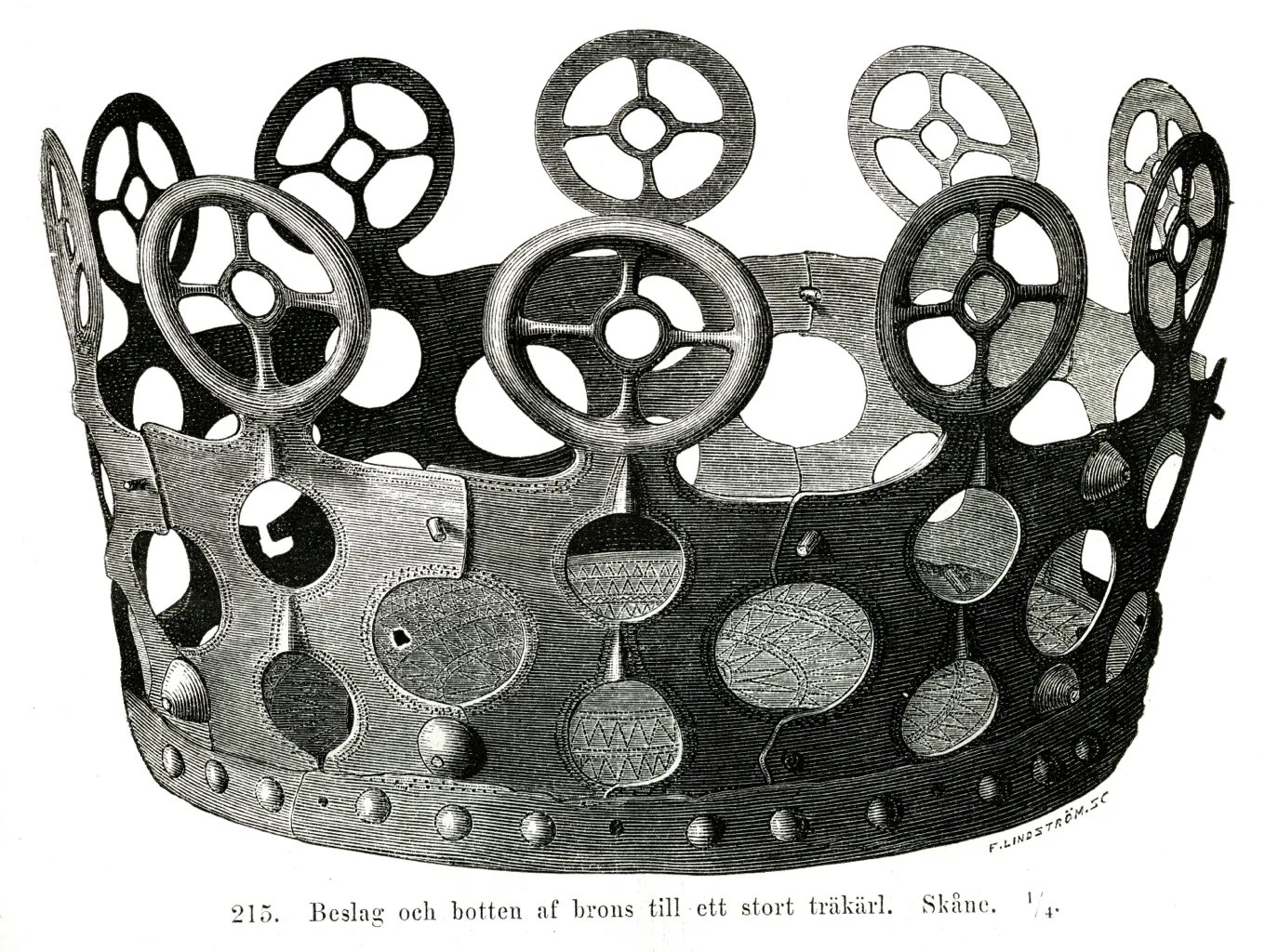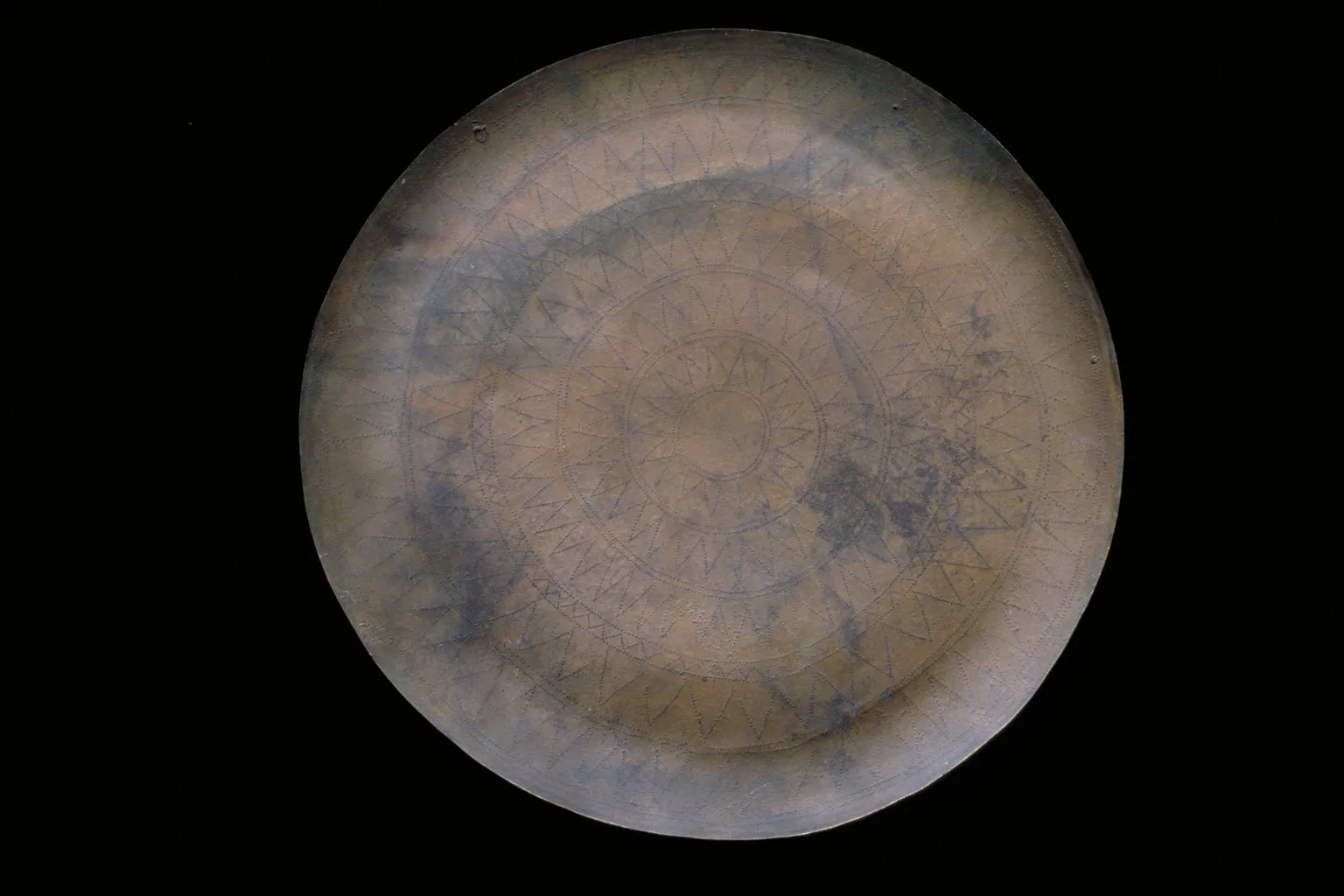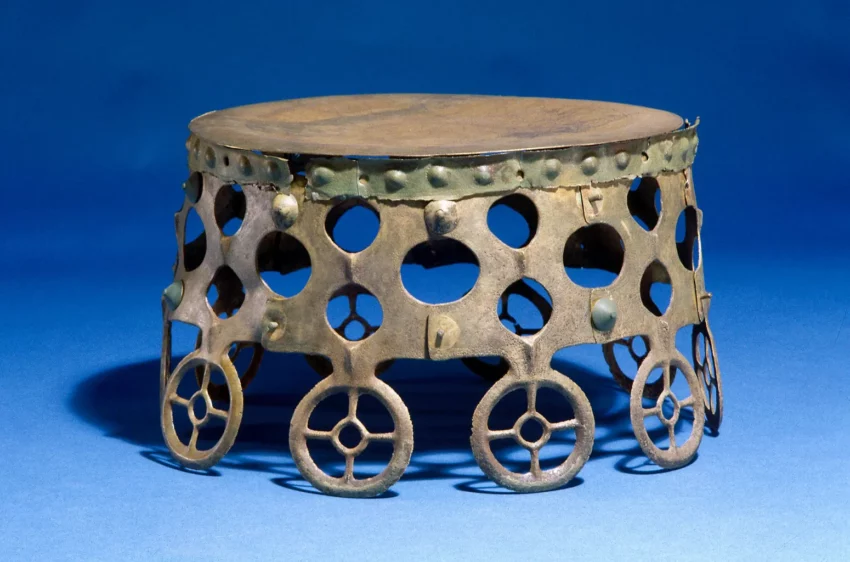The Balkåkra Ritual Object: Mystery from the Bronze Age
The Balkåkra Ritual Object, unearthed in 1847 near Ystad, Sweden, remains an enigma. This ancient bronze artifact, dating back to roughly 1500–1300 BC, has left archaeologists guessing about its true purpose. Though some suggest it may have been a ritual item, its exact function is still unknown. Despite its mystery, the object offers an intriguing glimpse into the culture of the Nordic Bronze Age.
Get your dose of History via Email
Discovery and Historical Context
The object was found in a bog in Balkåkra, a small area in Scania, Sweden. Its discovery occurred during a time when many artifacts were being recovered from wetlands across Northern Europe, often leading to speculation about their use in rituals or as offerings to the gods. The Balkåkra Object is believed to belong to the early Nordic Bronze Age, but some experts suggest it might date later, to the Urnfield period.

What makes this artifact even more puzzling is the discovery of a similar item in 1913 in Austria, near Hungary. This has led some to propose that the Balkåkra Object might have been imported from the Danube region or possibly from northern Italy, rather than being a product of local Scandinavian craftsmanship. Further connections to the Mediterranean are suggested by a miniature version found in Italy, indicating possible links between distant Bronze Age cultures.
Description: An Intricate Design
The Balkåkra Ritual Object is a complex bronze structure. It consists of a round frame with ten small wheels and a loose, slightly concave bronze disc resting on top. The disc, about 42 centimeters in diameter, is decorated with intricate zig-zag patterns arranged in concentric circles. These patterns have sparked much discussion, with some researchers proposing they represent solar rays or possibly encode a solar calendar.
Another intriguing feature is the markings found on both the Balkåkra and the Haschendorf objects. These consist of simple numerals—dots on the Balkåkra object and lines on the Haschendorf one—believed to have served as assembly instructions. This indicates that the objects may have been disassembled and reassembled, though why or how remains unclear.
Possible Interpretations
Despite its detailed design, the true function of the Balkåkra Object is a matter of speculation. Theories abound, but none have been definitively proven. Some scholars have suggested it could have been a gong, with the bronze disc used as a resonator. Others propose it may have been a drum or even a throne, though there is little evidence to support these ideas. Another theory suggests it could have functioned as a burning glass, used to focus sunlight in religious ceremonies.
One of the more popular interpretations is that the object had a symbolic or ritual use tied to the sun. The concentric zig-zag lines may represent solar rays, aligning with the common Bronze Age practice of sun worship. The four-spoked wheel, also a common solar symbol, further supports this theory. Given the sun’s central role in many ancient cultures, it’s not hard to imagine that the Balkåkra Object might have been part of some solar-related ritual.

Connections to Broader Bronze Age Cultures
One of the most intriguing aspects of the Balkåkra Object is how it ties into broader Bronze Age symbolism and artifacts. The discovery of a similar miniature item in Italy, alongside a Nuragic figurine of a ‘priest’ or ‘priestess,’ suggests a possible cultural connection between the Nordic Bronze Age and the Mediterranean. The Nuragic figurine wore a conical hat, a feature often seen in depictions of Bronze Age priests or kings, particularly in central Europe.
These conical hats have been linked to the so-called “Golden Hats,” found in places like Germany, which are thought to have been worn by astronomer-priests. The symbols on the Berlin Gold Hat, for example, have been interpreted as a complex luni-solar calendar, possibly used for tracking the Metonic cycle, which relates to the synchronization of the lunar and solar years.
There are also visual parallels between the Balkåkra Object and petroglyphs from the Nordic Bronze Age, particularly those found in the Kivik Kings’ Grave in Sweden. These rock carvings feature depictions of solar symbols and figures that could be interpreted as priests or kings, possibly hinting at a shared religious or ceremonial practice.

Conclusion: A Window into the Past
The Balkåkra Ritual Object is a tantalizing relic of a time long past. Its intricate design, combined with the uncertainty of its purpose, leaves much to the imagination. Was it a tool for religious ceremonies? A solar symbol? A functional object with a now-forgotten use? We may never know for sure. But its discovery, along with similar objects from across Europe, suggests that Bronze Age cultures were more interconnected than once thought.
As archaeologists continue to study these ancient artifacts, each new finding brings us one step closer to understanding the complex and often mysterious world of our ancestors. Until then, the Balkåkra Object remains a symbol of both the known and unknown aspects of Bronze Age life.
Sources:

